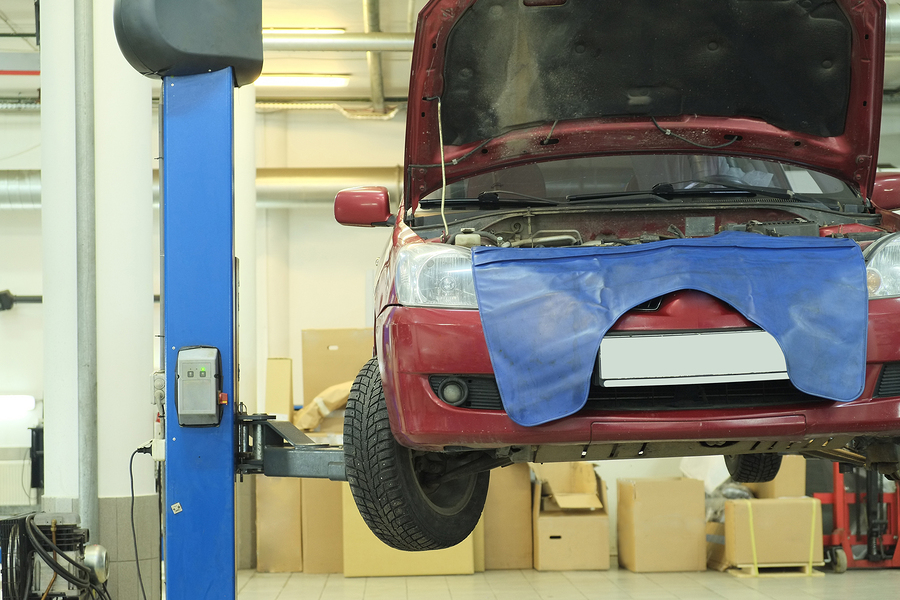6 Car Fluid Levels and How to Check them
Normally, when you think of fluids for your car, gas is the first one that comes to mind. But what about the other fluids that your vehicle needs? Just like a person, your car needs proper nutrition, and it's up to you to make sure it gets it. Knowing how to check your vehicle's fluid levels doesn't have to be hard. You just have to know what you're looking for.
The 6 levels to check:
• Oil
• Transmission
• Coolant
• Steering
• Brake
• Windshield Wiper
1. Oil
Oil lubricates your car and keeps everything running smoothly. Without enough oil, your vehicle could seize up in a matter of moments. To check your oil, you want your vehicle off and your engine cold to get the most accurate reading. Open the hood and find the dipstick with a yellow handle near the front of the engine. Pull out the dipstick, then wipe it down with a clean towel or rag. Take note of the markings on the dipstick. One is a minimum mark, and the other is a maximum. Reinsert the dipstick back into the tube and pull it out again. The oil should be between the minimum and maximum mark with a cold engine. If not, double-check what kind of oil your specific car uses, then with a funnel, fill with a quart of oil.
2. Transmission fluids
Just like oil, transmission fluid is another lubricant that keeps those gears turning. In newer model cars, transmission fluid is designed to last the lifetime of the car, not meant to be checked or changed. In many of these cases, the vehicles need to be taken to a mechanic to have their levels checked. For the rest, checking transmission levels is like checking the oil levels. With the car running and the car in neutral, repeat the same process as above, finding the red-handled dipstick. If you do need to add more transmission fluid, be sure to cycle through each gear with your foot on the break to free-flow the new fluid.
3. Coolant
It's no surprise that engines can get hot. Coolant (or antifreeze) helps your engine stay cool. It helps your engine from freezing up in the winter, especially if you live where it snows. To check your coolant level, you want your car off and the engine cold. If the car is hot, pressurized steam can escape, scalding or burning you. If your car has a reservoir tank, check to see if the levels are between the minimum and maximum levels. If it is below the minimum level, fill to just above the minimum. If there is no reservoir tank, open the radiator cap near the front of the engine compartment. If you can see water, you're fine. If not, fill until you can. Remember to use 50% coolant and 50% water when you fill up your coolant levels.
4. Steering fluids
This fluid protects your power steering components, which in turn helps you maneuver around easier. Much like other fluids, you'll find a cap entitled 'power steering fluid' and inside, a dipstick. Removing the cap, pull out the dipstick, wipe clean with a cloth or towel, and reinsert. Pull out again and check to see if the levels are between the minimum and maximum. If your fluid level is below the minimum, consult your car manual or a mechanic before refilling with the proper fluids.
5. Brake fluids
Your brakes run on hydraulics, meaning that if there's not enough fluid, you won't stop safely. If you find your brakes feeling spongy or not stopping the way they used to, it's time to check the fluids. To check your brake fluids, raise your hood and find the master cylinder located toward the rear of the car. Look inside to see if the fluid is between the two levels. If fluid levels are low, fill with the appropriate brake fluid for your vehicle. While brake fluid comes in a variety of colors, it should still be see-through. If you find your brake fluid dark or cloudy, take your car in to a mechanic to get it looked at.
6. Windshield Wiper Fluids
While your car may not need windshield wiper fluids to run, when it comes to driving safely, you'll certainly wish you had some. Luckily, windshield wiper fluids are the easiest to check and maintain out of the group. Look for a clear, plastic reservoir, generally on the passenger side of the vehicle. If the fluid levels are low, you can fill them up with windshield wiper fluids bought from any store.
Now that you know which ones and how to check your fluid levels, keep up on it. Proper maintenance of your vehicle will keep you safe, protect your vehicle, and prevent unnecessary mechanic visits. If you do find that you are having to replace fluids more often than recommended, or the fluids are dark or cloudy, see a mechanic promptly.

We Buy Any Cars Throughout Dunwoody
2025 © Dunwoody Sell Your Car All Rights Reserved. Privacy Policy
